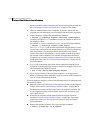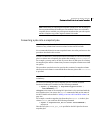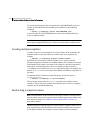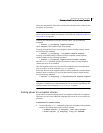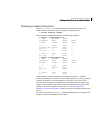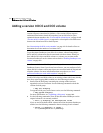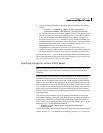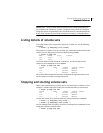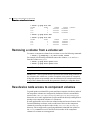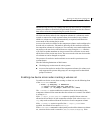
358 Administering volume snapshots
Adding a version 0 DCO and DCO volume
the volume named vol1 (the TUTIL0 and PUTIL0 columns are omitted for
clarity):
TY NAME ASSOC KSTATE LENGTH PLOFFS STATE ...
v vol1 fsgen ENABLED 1024 - ACTIVE
pl vol1-01 vol1 ENABLED 1024 - ACTIVE
sd disk01-01 vol1-01 ENABLED 1024 0 -
pl vol1-02 vol1 ENABLED 1024 - ACTIVE
sd disk02-01 vol1-02 ENABLED 1024 0 -
dc vol1_dco vol1 - - - -
v vol1_dcl gen ENABLED 132 - ACTIVE
pl vol1_dcl-01 vol1_dcl ENABLED 132 - ACTIVE
sd disk03-01 vol1_dcl-01 ENABLED 132 0 -
pl vol1_dcl-02 vol1_dcl ENABLED 132 - ACTIVE
sd disk04-01 vol1_dcl-02 ENABLED 132 0 -
In this output, the DCO object is shown as vol1_dco, and the DCO volume as
vol1_dcl with 2 plexes, vol1_dcl-01 and vol1_dcl-02.
If required, you can use the vxassist move command to relocate DCO plexes to
different disks. For example, the following command moves the plexes of the
DCO volume, vol1_dcl, for volume vol1 from disk03 and disk04 to disk07
and disk08:
# vxassist -g mydg move vol1_dcl !disk03 !disk04 disk07 disk08
For more information, see “Moving DCO volumes between disk groups” on
page 200, and the
vxassist(1M) manual page.
Removing a version 0 DCO and DCO volume
Note: The operations in this section relate to version 0 DCO volumes. They are
not supported for the version 20 DCO volume layout that was introduced in
VxVM 4.0.
To dissociate a DCO object, DCO volume and any snap objects from a volume, use
the following command:
# vxassist [-g diskgroup] remove log volume logtype=dco
This completely removes the DCO object, DCO volume and any snap objects. It
also has the effect of disabling FastResync for the volume.
Alternatively, you can use the vxdco command to the same effect:
# vxdco [-g diskgroup] [-o rm] dis dco_obj
The default name of the DCO object, dco_obj, for a volume is usually formed by
appending the string _dco to the name of the parent volume. To find out the
name of the associated DCO object, use the
vxprint command on the volume.
To dissociate, but not remove, the DCO object, DCO volume and any snap objects
from the volume, myvol, in the disk group, mydg, use the following command:
# vxdco -g mydg dis myvol_dco



